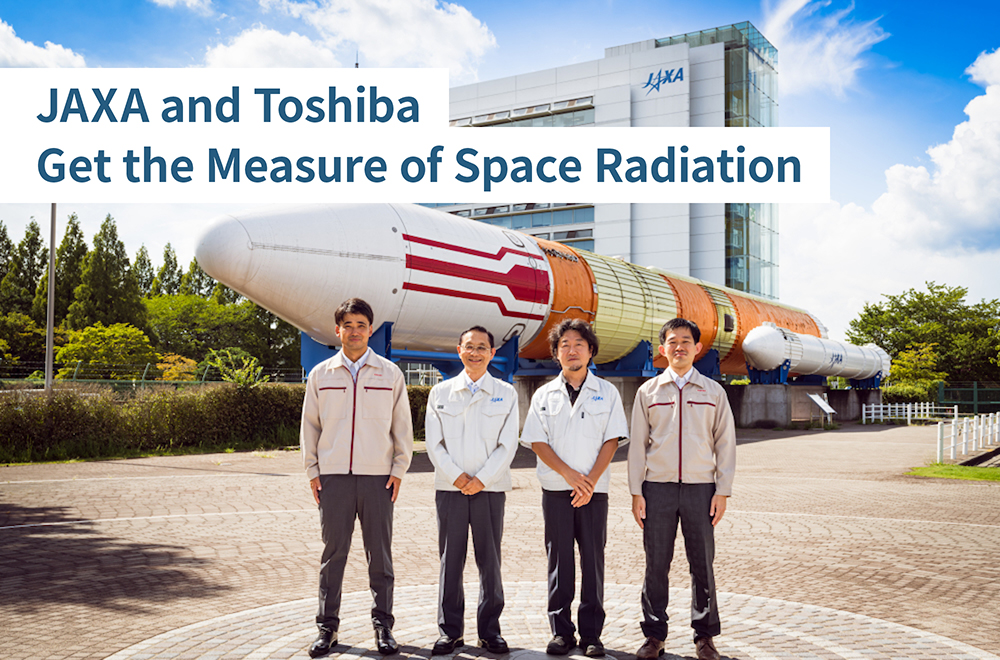The Unsung Heroes of 5G: How Toshiba’s Technologies Take High-Speed Wireless Networks to the Next Level
2021/01/20 Toshiba Clip Team
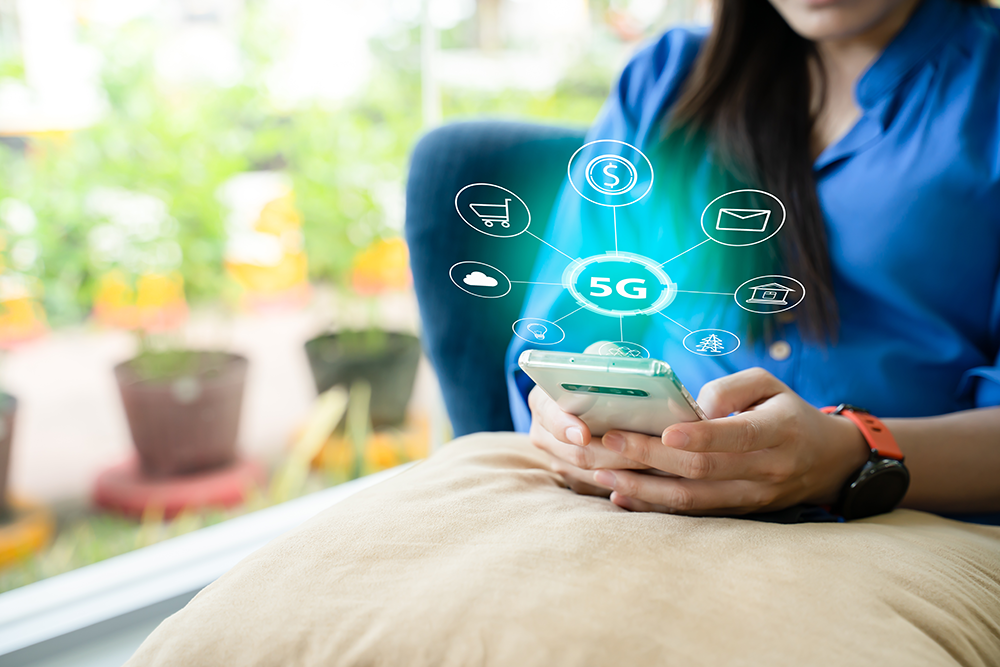
When you see the word “5G” in the news, what comes to mind? Being able to watch sports games using virtual reality? Greater high-speed data on your smartphone? Shorter download times? 5G promises all of that as the next-generation mobile network and people can’t wait to get their hands on it. As we get closer to the technology’s commercial release, we can also see how 5G will help create smart factories by connecting various sensors on-site. It will also contribute to developing autonomous-driving vehicles. So 5G isn’t just limited to mobile communications. It’s so much more than that. It will form an entirely new IoT infrastructure to connect a broad range of things and become the foundation for digital transformations already taking place across a broad spectrum of industries.
The main features of 5G are ultra-high-speed, ultra-low latency, and massive connectivity. That means you can download a two-hour movie within seconds; transfer information with a delay of just 1/1000 of a second; and connect around 100 devices and sensors to the internet in a single room in your home. The ultra-high-speed, in particular, will accelerate the current speed of mobile communication by more than 100 times.
Toshiba is working to support the 5G communication infrastructure by leveraging high-speed wireless technologies developed over many years in its digital broadcasting and wireless LAN businesses. One of the areas that our engineers have focused on is ultra-high-speed wireless technologies for backhaul communications. These technologies eliminate the need for physical relay links to connect 5G networks and support ultra-high-speed data communications. We talked to members of the Corporate Research & Development Center who are involved in developing these technologies.
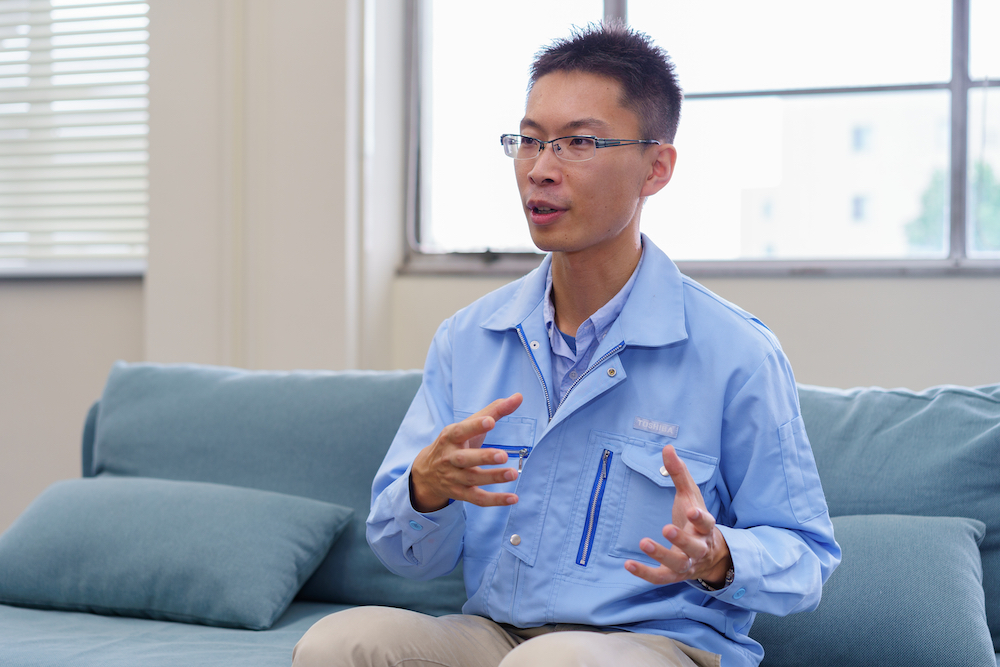
Daisuke Uchida
Wireless System Laboratory, Information and Communication Platform Laboratories,
Corporate Research & Development Center, Toshiba Corporation.
Technologies to support ultra-high-speed 5G communications
Daisuke Uchida works in the Wireless System Lab at the Corporate Research & Development Center. He is one of the engineers who developed the technologies that will support 5G communications behind the scenes. Dr. Uchida and his team focused on the ultra-high-speed element of 5G.
“The question was, how do we achieve ultra-high-speed in a 5G network? People have tried different methods, and the most common one is enhancing speed by using a wide bandwidth. The frequencies for 3G and 4G aren’t enough in that sense. We’re looking to use an even higher frequency called the millimeter wave (mmWave).”
The mmWave is a band that has never before been used for mobile communications. One of the challenges engineers are facing is the fact that the mmWave can only be transmitted over a short distance. This would require building many base stations close together within the network, resulting in enormous infrastructure costs.
Before we get into the details, let’s first take a look at how 5G reaches mobile devices like our smartphones. To begin with, there’s something called an access link that communicates between the base station and your smartphone. Base stations are buildings or other structures equipped with antennas on top. Mobile devices like smartphones communicate wirelessly with these base stations. When you think of how mobile communications work, this is probably what comes to mind.
What you may not know is that, similar to how the base station communicates with mobile devices, it also communicates with the internet through something called a core network. This connection between the base station and the core network is called a backhaul link.
So to summarize, your smartphone uses an access link to communicate with a base station, which in turn uses a backhaul link to communicate with a core network and connect to the internet.

Flow of 5G communication system
The core network obtains various data and provides security management. Since damage to the core network can result in disrupting communications, the backhaul link needs to be both very reliable and be able to operate at a high-speed.
Dr. Uchida and his team set their eyes on this backhaul link. To enhance the speed for 5G, which transfers massive amounts of data, they knew they had to speed up not just the access link but also the backhaul link.
Dr. Uchida explained that “Until now, the backhaul link was connected using optical fibers. Compared to other countries, Japan has many optical communication networks in place, but they’re difficult to set up in areas like mountainous regions. To enable 5G communications, we would have had to set up new base stations in areas like that, which would have cost a lot of money. So we narrowed down our R&D objective to developing a wireless backhaul link.”

Image of the backhaul link
As we mentioned earlier, the mmWave is ideal for achieving 5G’s ultra-high-speed. But radio waves with such high frequencies don’t reach very far, creating a challenge for ensuring long-distance transmission. Dr. Uchida and his team searched for ways to transmit radio waves wirelessly using mmWave frequencies over long distances. This led them to develop 5G ultra-high-speed wireless technologies for backhaul links.
Breakthrough to transmitting the mmWave over long distances
Toshiba’s new technologies paved the way for successfully reaching a transmission speed of 20 Gbps, which 5G requires. Converted into transmission distance, that means the team was able to transmit mmWave frequencies over five kilometers*. This eliminates the need for optical fibers and other cables to connect backhaul links, which in turn reduces construction fees and maintenance work. These technologies will greatly contribute to broadening the area of 5G service.

Increased efficiency with wireless backhaul links
*The distance used to conduct field tests was 900 meters. An attenuator was installed on the receiving side, which, coupled with atmospheric attenuation and propagation loss, can simulate a five-kilometer transmission distance.
“I joined this project and began researching potential technologies back in 2016. From there, we modeled the environment and carried out simulations. In 2017, we created prototypes and held trials in the lab. Then during the summer of 2018 and in March 2019, we conducted field tests in the UK and achieved a transmission speed of 20 Gbps. In December 2019, we participated in GLOBECOM 2019, which was held in Hawaii, USA. GLOBECOM is an especially prestigious international conference in the communications sector, and we were able to present the innovative nature of our technologies there.”
The team faced a large obstacle in their quest to reach 20 Gbps: the mmWave’s radio signals attenuate easily, so by the time they reach the receiving antennas after traveling a long distance, the wireless signals have been degraded. This made it difficult to ensure the transmission of high-quality signals.
To overcome this obstacle, Dr. Uchida and his team focused on the Multiple Input Multiple Output (MIMO) technology. This technology utilizes multiple antennas on both the transmitting and receiving ends and accelerating wireless communication by sending and receiving multiple different signals. The radio waves bounce off buildings and other physical obstructions and reach the receiving antennas from different angles. MIMO technology enables fast and stable communication utilizing the bounce. In other words, the MIMO technology exploits radio wave reflections off buildings to enhance communication performance.
However, the team’s plan for setting up wireless backhaul communications for 5G was to install antennas in high places— meaning there were very few physical obstructions to cause radio wave reflections. Furthermore, to transmit mmWave over a long distance, the direction of their travel, from the transmitter side to the receiver side, needs to be narrowed down significantly. This would further reduce radio wave reflections. So under these circumstances, it was difficult to split signals to ensure the ultra-high-speed and massive capacity required for 5G communications. Dr. Uchida and his team addressed this by turning to a technology known as polarized MIMO, which stabilizes and accelerates transmissions by splitting radio waves into vertical and horizontal polarized waves.
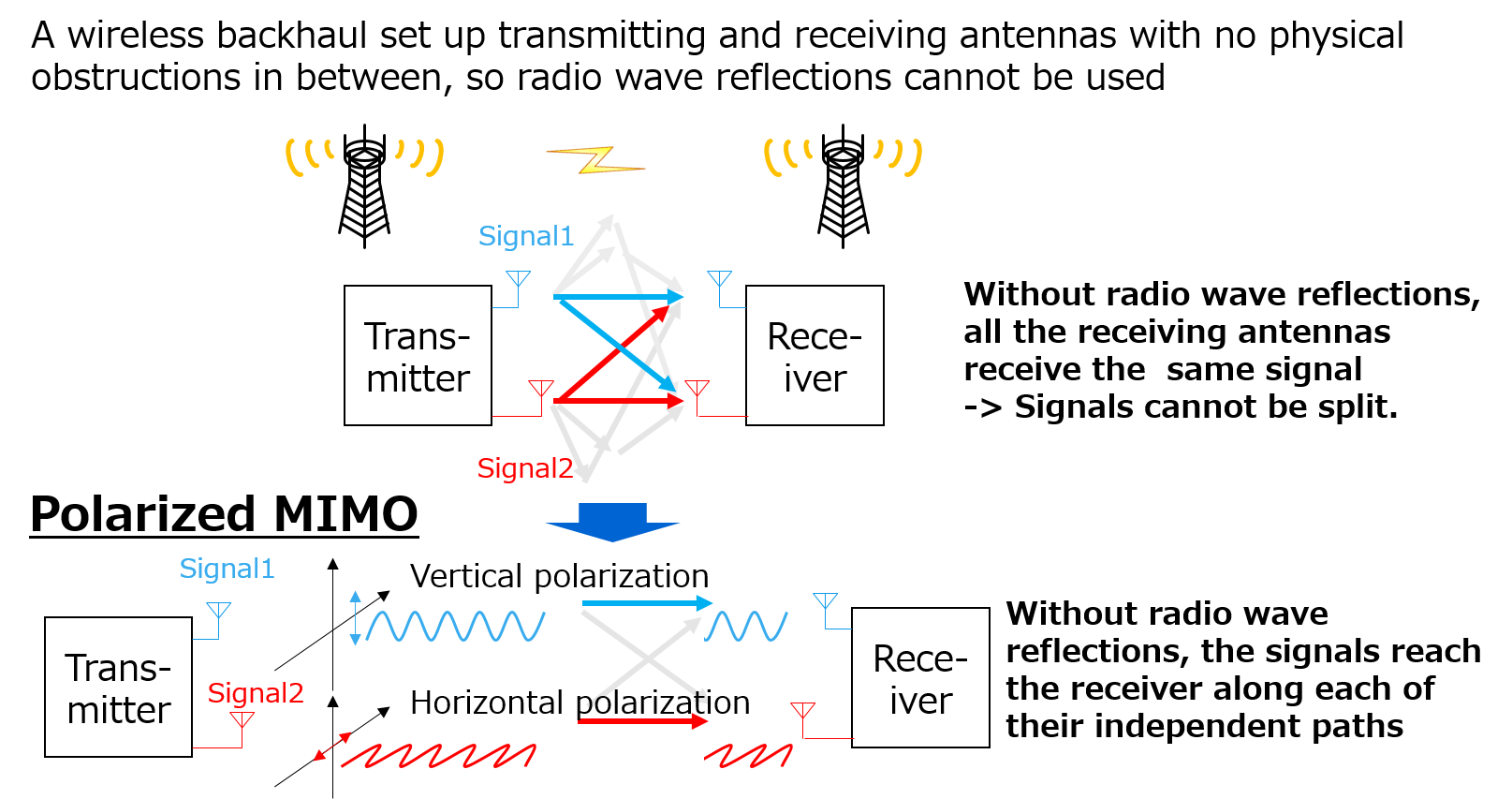
Use of polarized MIMO
“The radio waves are split into vertical waves that vibrate vertically and horizontal waves that vibrate horizontally. By using these two waves, we can establish independent paths, which allows us to achieve a stable transmission at double the speed. Until now there haven’t been any reports of engineers transmitting radio waves over a distance of more than one kilometer using polarized MIMO at high speeds like 20 Gbps. At Toshiba, we have accumulated a wealth of expertise in MIMO technologies through the R&D of wireless LANs. So we drew on our past achievements to carry out simulations and field tests to accelerate the transmission speed.”
The key was past research of digital broadcasting and wireless LANs
The simulations went smoothly, but the team hit a wall when they started conducting lab trials using prototypes: they needed to find a way to prevent signal degradation. Since the receivers weren’t receiving the signals properly, the trials fell short of reaching the transmission speed needed for 5G.
“When you’re transmitting signals at 20 Gbps, which is the requirement for 5G communications, a lot of information is being sent all at once. Naturally, sending large amounts of data makes the transmissions susceptible to noise. Additionally, when you’re using the mmWave, which covers a wide bandwidth, it’s extremely difficult to ensure that every frequency demonstrates the same characteristics. So we sought insight from members of the Toshiba Corporate Research & Development Center who have specialized knowledge in this field. It led us to add broadband distortion correction technologies to polarized MIMO. These technologies correct each radio wave and ensure that their signals are properly transmitted, which enables high-speed, high-capacity communications.”
Distortion correction technologies are commonly used for wireless LANs and other standard wireless communications. Toshiba has been engaged in the R&D of digital broadcasting, wireless LANs and Wi-Fi for many years. Technologies to correct broadband distortions were first used in digital broadcasting, which is a field that Toshiba has been researching for over 20 years.
The field tests held in the UK leveraged both polarized MIMO and broadband distortion correction technologies, which proved to be the breakthrough elements of this project. The test results showed that they are almost ready to be used for 5G. Since announcing the technologies, Toshiba has been working to turn them into a business and is in talks with communication carriers who wish to expand the area of their 5G service coverages.
“We still need to overcome many obstacles to make this a successful business. That includes making the devices’ communications even more stable so that they can be used in mountainous regions. To do so, we’ll draw on the technologies Toshiba has developed over the years, just as we did when we added distortion correction technologies to polarized MIMO. I hope to continue refining the technologies that will support the highly anticipated 5G.”
Toshiba’s engineers are committed to building a next-generation communications infrastructure by making full use of the technologies Toshiba has developed through years of research in digital broadcasting and wireless LANs. There is no doubt that 5G will change our lives as well as many industries going forward. We will be there every step of the way, engaging in R&D to provide behind-the-scenes support as “the unsung heroes of 5G.”
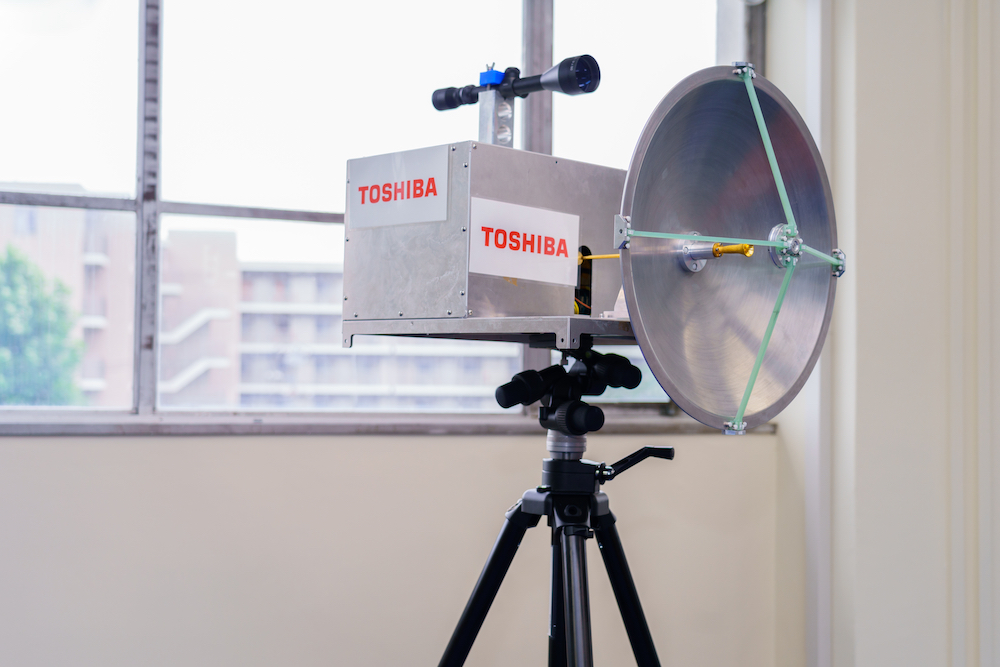
![]()





